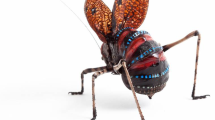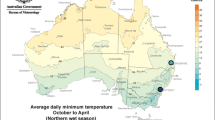Abstract
There are two major forms of protective coloration, camouflage and warning coloration, which often entail different colour pattern characteristics. Some species change strategy between or within life stages and one such example is the striated shieldbug, Graphosoma lineatum. The larvae and the pale brownish-and-black striated pre-diapause adults are more cryptic in the late summer environment than is the red-and black striation that the adults change to after diapause in spring. Here we investigate if the more cryptic pre-diapause adult and larval coloration may affect the aposematic function of the coloration as compared to the red adult form. In a series of trials we presented fifth instar larvae, pale or red adults to shieldbug-naïve domestic chicks, Gallus gallus domesticus, to investigate the birds’ initial wariness, avoidance learning, and generalization between the three prey types. The naïve chicks found the red adults most aversive followed by pale adults, and they found the larvae the least aversive. The birds did not find the larvae unpalatable and did not learn to avoid them, while they learned to avoid the two adult forms and then to a similar degree. Birds generalized asymmetrically between life stages, positively from larvae to adults and negatively from adults to larvae. We conclude that the lower conspicuousness in the pale forms of G. lineatum may entail a reduced aposematic function, namely a reduced initial wariness in inexperienced birds. The maintenance of the colour polymorphism is discussed.



Similar content being viewed by others
References
Bates HW (1862) Contributions to an insect fauna of the Amazon valley. Lepidoptera: Heliconidae. Trans Linn Soc Lond 23:495–515
Cott HC (1940) Adaptive colouration in animals. Methuen, London
Darwin CR (1871) The decent of man and selection in relation to sex. Princeton University Press, New Jersey
Edmunds ME (1974) Defence in animals: a survey of anti-predator defences. Longman, Essex
Endler JA (1978) A predator’s view of animal color patterns. Evol Biol 11:319–364
Endler JA, Mappes J (2004) Predator mixes and the conspicuousness of aposematic signals. Am Nat 163:532–547
Exnerová A, Štys P, Kristin A, Volf O, Pudil M (2003) Birds as predators of true bugs (Heteroptera) in different habitats. Biologia 58:253–264
Exnerová A, Svádová K, Štys P, Barcalová S, Landová E, Prokopová M, Fuchs R, Socha R (2006) Importance of colour in the reaction of passerine predators to aposematic prey: experiments with mutants of Pyrrhocoris apterus (Heteroptera). Biol J Linn Soc 88:143–153
Exnerová A, Svádová KI, Fousová P, Fuciková E, Jezová D, Niederlová A, Kopecková M, Štys P (2008) European birds and aposematic Heteroptera: review of comparative experiments. Bull Insectol 61:163–165
Freeman GH, Halton JH (1951) Note on exact treatment of contingency, goodness of fit and other problems of significance. Biometrika 38:141–149
Gamberale-Stille G (2001) Benefit by contrast: an experiment with live aposematic prey. Behav Ecol 12:768–772
Gamberale-Stille G, Guilford T (2004) Automimicry destabilizes aposematism: predator sample-and-reject behaviour may provide a solution. Proc R Soc Lond B 271:2621–2625
Gittleman JL, Harvey PH, Greenwood PJ (1980) The evolution of conspicuous coloration: some experiments in bad taste. Anim Behav 28:897–899
Grant JB (2007) Ontogenetic colour change and the evolution of aposematism: a case study in panic moth caterpillars. J Anim Ecol 76:439–447
Guilford T (1988) The evolution of conspicuous coloration. Am Nat 131:S7–S21
Ham AD, Ihalainen E, Lindström L, Mappes J (2006) Does colour matter? The importance of colour in avoidance learning, memorability and generalisation. Behav Ecol Sociobiol 60:482–491
Kotaki T (1998) Effects of low temperature on diapause termination and body colour change in adults of a stinkbug, Plautia stali. Physiol Entomol 23:53–61
Lindström L, Rowe C, Guilford T (2001) Pyrazine odour makes visually conspicuous prey aversive. Proc R Soc Lond B 268:159–162
Matthews EG (1977) Signal-based frequency-dependent defence strategies and the evolution of mimicry. Am Nat 111:213–222
Maynard Smith J, Harper D (2003) Animal signals. Oxford University Press, Oxford
Merilaita S, Ruxton GD (2007) Aposematic signals and the relationship between conspicuousness and distinctiveness. J Theor Biol 245:268–277
Merilaita S, Tullberg BS (2005) Constrained camouflage facilitates the evolution of conspicuous warning coloration. Evolution Int J org Evolution 59:38–45
Musolin DL, Numata H (2003) Photoperiodic and temperature control of diapause induction and colour change in the southern green stinkbug Nezara viridula. Physiol Entomol 28:65–74
Nylin S, Gamberale-Stille G, Tullberg BS (2001) Ontogeny of defence and adaptive coloration in larvae of the comma butterfly, Polygonia c-album (Nymphalidae). J Lep Soc 55:69–73
Osorio D, Jones CD, Vorobyev M (1999) Accurate memory for colour ut not pattern contrast in chicks. Curr Biol 9:199–202
Poulton EB (1890) The colours of animals: their meaning and use especially considered in the case of insects. D. Appleton and Co, New York
Riipi M, Alatalo RV, Lindström L, Mappes J (2001) Multiple benefits of gregariousness cover detectability costs in aposematic aggregations. Nature 413:512–514
Roper TJ, Cook SE (1989) Responses of chicks to brightly colored insect prey. Behaviour 110:276–293
Roper TJ, Redston S (1987) Conspicuousness of distasteful prey affects the strength and durability of one-trial avoidance-learning. Anim Behav 35:739–747
Ruxton GD, Speed MP (2006) How can automimicry persist when predators can preferentially consume undefended mimics? Proc R Soc Lond B 273:373–378
Ruxton GD, Sherratt TN, Speed MP (2004) Avoiding attack. The evolutionary ecology of crypsis, warning signals and mimicry. Oxford University Press, Oxford
Sandre SL, Tammaru T, Mand T (2007) Size-dependent colouration in larvae of Orgyia antiqua (Lepidoptera : Lymantriidae): a trade-off between warning effect and detectability? Eur J Entomol 104:745–752
Schlee MA (1986) Avian predation on Heteroptera: experiments on the European Blackbird Turdus merula L. Ethology 73:1–18
Sherratt TN, Beatty CD (2003) The evolution of warning signals as reliable indicators of prey defence. Am Nat 162:377–389
Sillén-Tullberg B (1985) Higher survival of an aposematic than of a cryptic form of a distasteful bug. Oecologia 67:411–415
Speed MP, Ruxton GD (2005) Aposematism: what should our starting point be? Proc R Soc Lond B 272:431–438
Stehlik JL (1984) Results of the investigations on Hemiptera in Moravia made by the Moravian Museum (Pentatomoidea III). Acta Mus Morav Sci Nat 69:163–185
Stichel W (1960) Illustrierte Bestimmungstabellen der Wanzen. II Europa (Hemiptera-Heteroptera Europae), vol. 4. Hermsdorf, Berlin
Stransky K, Valterová I, Ubik K, Cajka J, Krecek J (1998) Volatiles from stink bug, Graphosoma lineatum (L.), and from green shield bug, Palomena prasina (L.), (Heteroptera: Pentatomidae). J High Resolut Chromatogr 21:475–476
Svádová K, Exnerová A, Štys P, Landová E, Valenta J, Fucíková A, Socha R (2009) Role of different colours of aposematic insects in learning, memory, and generalization of naive bird predators. Anim Behav 77:327–336
Tullberg BS, Gamberale-Stille G, Bohlin T, Merilaita S (2008) Seasonal ontogenetic colour plasticity in the adult striated shieldbug Graphosoma lineatum (Heteroptera) and its effect on detectability. Behav Ecol Sociobiol 62:1389–1396
Vesely P, Veselá S, Fuchs R, Zrzavy J (2006) Are gregarious red-black shieldbugs, Graphosoma lineatum (Hemiptera: Pentatomidae), really aposematic? An experimental approach. Evol Ecol Res 8:881–890
Wagner E (1956) Zur Systematik der Gattung Graphosoma Lap. (Hem., Het. Pentatomidae). Entomol Ber 16:110–116
Wiklund C, Sillén-Tullberg B (1985) Why distasteful butterflies have aposematic larvae and adults, but cryptic pupae: evidence from predation experiments on the monarch and European swallowtail. Evolution Int J org Evolution 39:1155–1158
Acknowledgments
We would like to thank Alice Exnerová, Pavel Štys, Sami Merilaita and two anonymous referees for their valuable comments on the manuscript. This study was financially supported by the Swedish Research Council (to G.G.-S. and B.S.T.).
Author information
Authors and Affiliations
Corresponding author
Rights and permissions
About this article
Cite this article
Gamberale-Stille, G., Johansen, A.I. & Tullberg, B.S. Change in protective coloration in the striated shieldbug Graphosoma lineatum (Heteroptera: Pentatomidae): predator avoidance and generalization among different life stages. Evol Ecol 24, 423–432 (2010). https://doi.org/10.1007/s10682-009-9315-3
Received:
Accepted:
Published:
Issue Date:
DOI: https://doi.org/10.1007/s10682-009-9315-3




